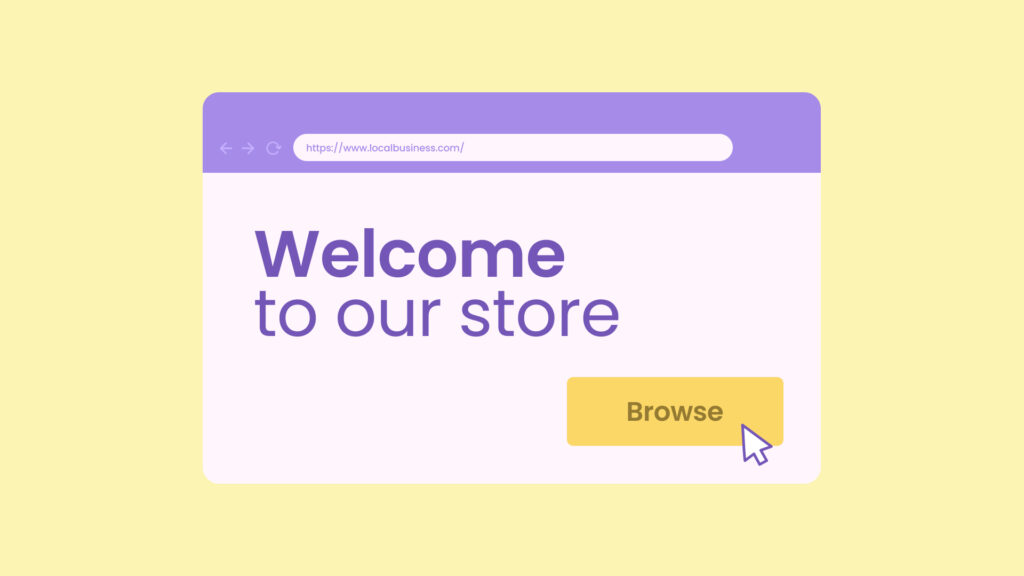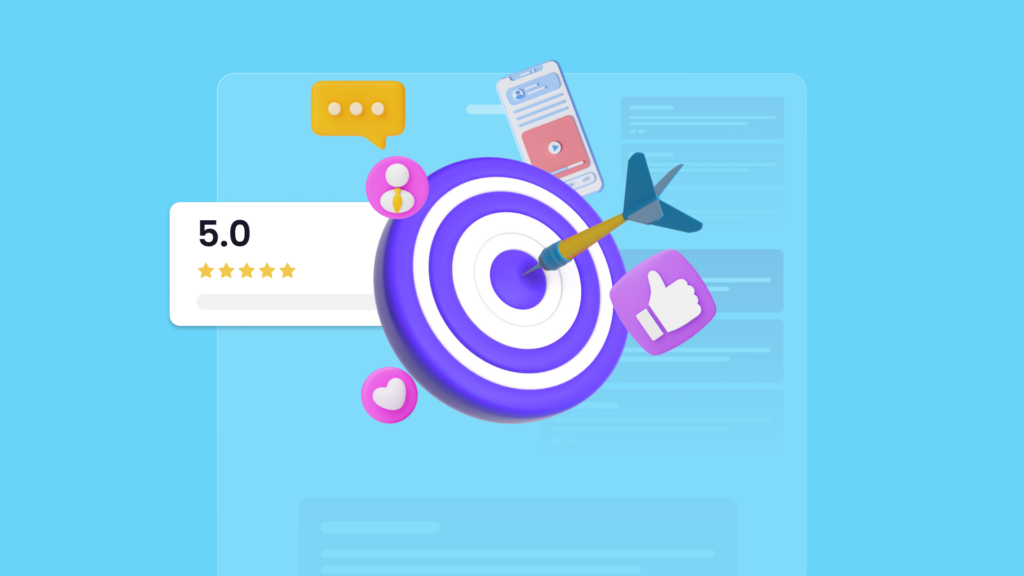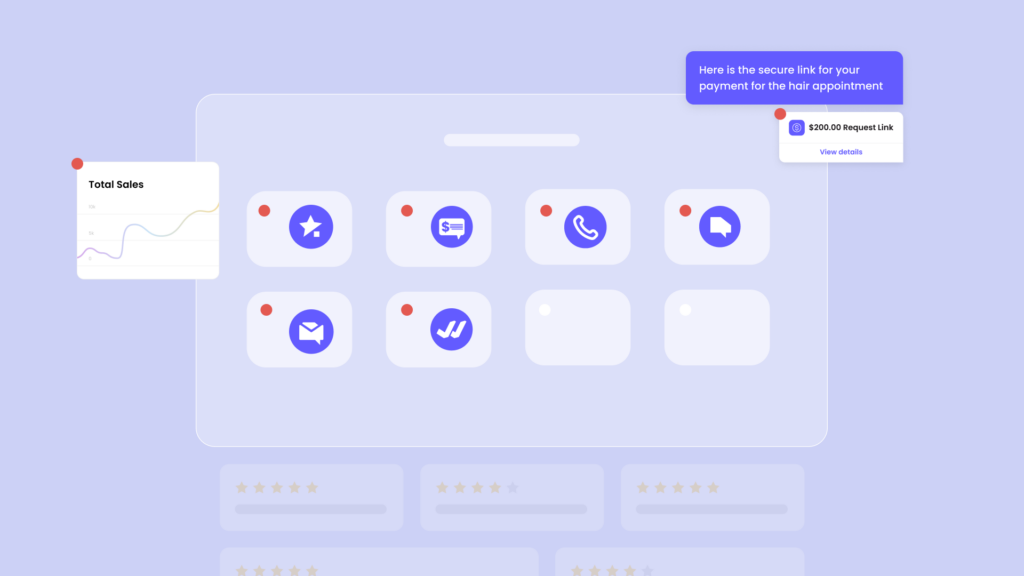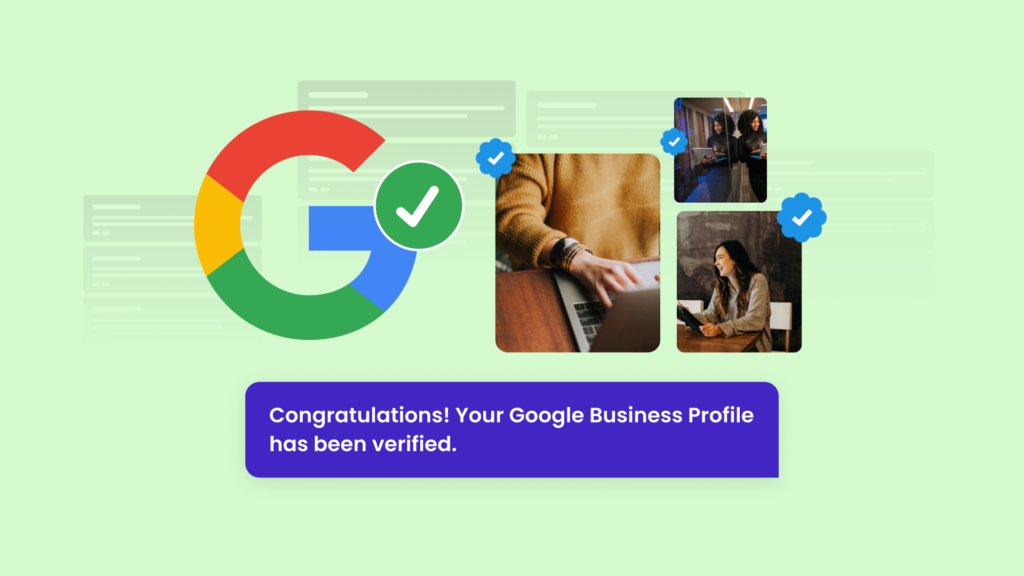Creating a website for your small business can seem like a daunting task, but it doesn’t have to be. With the right tools and a little bit of knowledge, you can create a professional and effective website that showcases your products or services and helps you connect with customers.
In this article, we’ll walk you through the steps to create a simple and effective website for your small business, without the need for any technical expertise or expensive software. We’ll cover everything from choosing a domain name and hosting provider, to designing and publishing your website. By the end of this guide, you’ll have a professional-looking website that will help you reach a wider audience and grow your business.
Identify the purpose of your website
When building a website for your small business, the best place to start is by determining its purpose, i.e., what you want it to do. This will help guide all your design and content decisions to ensure that your website effectively meets the needs of your business and your target audience.
Below are some questions to answer that will help you determine the purpose of your small business website:
- Goals: Do you want your website to generate leads, sell products, provide information, or do something else? By defining your goals, you can set clear objectives, which will help determine what specific features and functionality your website needs to have.
- Target audience: Who is your perfect customer? Demographics, interests, and pain points will help you tailor your website’s content and design to appeal to your target audience.
- Check out your competition: Look at other websites in your industry to see what they are doing well and what you can do differently. This will help you stand out in a crowded online marketplace and ensure that your website meets the needs and expectations of your audience.
- What is your UVP (Unique Value Proposition)? Why you? What value are you offering to your customers? Communicating your value proposition clearly on your website can help you attract and retain customers.
Taking the time to determine the purpose of your small business website is the first step in creating a website that effectively supports and grows your business.
Choose a domain name and hosting provider
Choosing a domain name and hosting provider for your website is an important decision that may impact the success of your online presence. Here are some tips to help you make the right choice:
Domain Name
- To help build your online brand, choose a domain name that is easy to remember and spell.
- Try not to use hyphens or numbers, as they can be confusing and make it harder for people to find your site. However, if your ideal domain name is not available, adding a hyphen can be an easy way to grab the domain you want.
- Consider the keywords that people might use to search for your site, and try to include them in your domain name if possible, as this can help improve your search engine rankings.
- Make sure the extension of your domain name is appropriate for your business. “.com” is generally the most popular and widely recognized, but other options such as “.net” and “.org” can also be effective, depending on your business, especially if the extension of your choice is not available.
- If you are also setting up social media accounts, try and make sure your domain name is available as a social media handle and can fit in the character limit, e.g., Twitter has a 15-character limit for handles. A Google search for ‘is my social media name available’ will generate several sites where you can do a blanket search. However, it’s worth noting that if these sites say your name is unavailable, for example, on Instagram, it’s always worth going onto the platform directly to double-check.
If you are having difficulties creating a suitable domain name, you can always try a domain generator. Again, a quick Google search will bring up plenty of free options.
How to choose a hosting provider
It’s important to choose a hosting provider that offers the resources you need, such as enough storage and bandwidth to support your website, reliable uptime and, more importantly, good customer support.
Many hosting providers offer a variety of hosting plans to choose from, which makes it easy for small businesses to scale hosting as their business grows.
There are many hosting providers to choose from, so do some research and choose one that meets your needs and budget. Some recommended hosting providers for small businesses include BlueHost, GoDaddy and Ionis, other providers are also available.
Ultimately, the right domain name and hosting provider will depend on the specific needs of your business. By considering factors such as ease of use, keyword optimization, and the resources and support offered by the hosting provider, you can choose a domain name and hosting provider that will help your business succeed online.
Choose a website builder
If you want to build a website but don’t have a design background, you should consider using a website builder. These sites make it easy to create a professional website without needing coding skills and offer templates and drag-and-drop features that allow you to customise your website’s design and layout.
Your chosen hosting provider may offer a website builder package on top of your hosting package. This will generally be either a site-specific builder or WordPress. Alternatively, popular website builders include Wix, Squarespace, and Weebly. These platforms offer a variety of templates and design options, as well as features like e-commerce capabilities, SEO tools, and social media integration.
When choosing a website builder, you should keep in mind what type of website you want to create. A creative site with many images and videos might be better built with Squarespace, whereas for an e-commerce site, Shopify is a good option.
Overall, a website builder is a great way to create a professional and effective website for your small business. It’s quick, easy, cost-effective, and allows you to create a website that reflects your business and engages your customers.
Getting started with a website builder
Getting started with a website builder is easy. First, you’ll need to sign up for an account and choose a plan that meets your needs. Then you’ll be able to start building your website.
The process usually involves selecting a template, customising the layout and design, and adding content such as text, images, and videos. Website builders typically have drag-and-drop editors that make it easy to add and rearrange elements on your site.
Most website builders offer a free trial or basic plan that allows you to create a basic website with a limited number of pages and features. From there, you can choose to upgrade to a premium plan that offers more advanced features and support.
What content should I add?
A well-designed website needs to capture the essence of your business and engage visitors. It’s also important to optimise the content for search engines by including relevant keywords and using good website structure and formatting.
By considering your target audience, you can offer relevant, compelling, and helpful content that talks to them, backed up with photos, videos, and other media, if necessary. Additionally, by thinking about the user experience, you can make it easy for them to find the information they need.
When it comes to designing the site, it’s important to remember the purpose of your website and what you want it to do. If you’re trying to generate sign-ups to an email list, you may only need a simple landing page, a brick-and-mortar clothing boutique may only need a news and events page along with a simple listing of products, whereas an online store may need a full eCommerce engine.
For a small, local business, a key element of the website is the contact section which should include a physical address, multiple methods of contact, a map that shows your location, hours of operation, and other pertinent information.
Other elements that can help engage users and build credibility are:
- Reviews – online shoppers who have a positive experience with a product or service are more likely to buy
- Professional membership logos can help establish credibility and reassure visitors that your site is trustworthy
- Social media links can help build credibility by providing another way for visitors to interact with your business and see what others are saying about it
- Images and videos can make your website more visually appealing and engaging, encouraging visitors to stay longer and explore more of your site
A slow-loading site can cause users to lose interest and become distracted. To avoid these pitfalls, ensure that your website has an easy-to-read, mobile-friendly interface.
When you’ve finished building your website and adding content, it’s time for one quick final check before publishing. Most website builders have a preview button, so it’s always a good idea to do a sense check (especially for spelling errors) and see how it looks on various devices, especially if you’re using a responsive design (see the section below). When you’re completely satisfied, hit the big publish button!
How to make your website mobile-friendly when using a website builder
With the increasing use of smartphones and tablets, it’s important to ensure that your website is mobile-friendly, which means that it’s easy to read and navigate on a small screen and easily adjustable depending on the device. If your website is not mobile-friendly, you could be losing out on potential customers and visitors.
By following the tips below, you can create a mobile-friendly website that is easy to use, looks great on any device, and will help you attract and retain more visitors, ultimately driving more traffic and revenue to your business:
- Choose a responsive website builder: A responsive website builder adjusts the layout of your website automatically to fit the screen size of the device being used, meaning your website will look good on a desktop, laptop, tablet, or smartphone without the need for separate mobile versions.
- Use a mobile-friendly design: When choosing a design for your website, select a template optimised for mobile devices. This includes using large, easy-to-read font sizes, plenty of white space, and responsive design elements such as buttons and forms.
- Test your website on different devices: Before you launch your website, it’s important to test it on a variety of devices to ensure that it looks and functions correctly. This includes testing on different screen sizes, operating systems, and browsers.
- Optimize images and videos: Large images and videos can take longer to load on mobile devices, which can be frustrating for users. To improve the mobile experience, try to use smaller, optimised images and videos, or consider using a content delivery network (CDN) to improve load times.
- Use mobile-friendly navigation: Navigation is especially important on mobile devices, as users are often looking for specific information quickly. Make sure to use clear, easy-to-use navigation that is optimised for mobile devices, such as a hamburger menu (3 horizontal lines) or a drop-down menu.
How to promote your website
Once you’ve hit the big publish button, it’s time to get the word out about your shiny new website.
Utilising search engine optimization (SEO) is one of the most effective ways to promote your website. Pre-publishing, SEO involves researching relevant keywords to use in your website’s content and metadata. Post-publishing involves building high-quality backlinks from other reputable websites, and the easiest way to do this is by guest blogging on other websites, preferably with a higher domain authority than yours, in exchange for a link back to your website. This approach can expand your reach and can bring in more traffic. You can also post to your business blog on your website, which will help establish your expertise and authority.
By making your website more visible and attractive to search engines, you can increase your website’s ranking in search results and attract more organic traffic.
Another effective way to promote your website is to use social media platforms like Facebook, Instagram, and Twitter. By sharing your website’s content and engaging with your followers, you can drive traffic to your site and increase your brand’s visibility. Additionally, adding a social bar to your website allows visitors to share your content. You can also use social media to build relationships with influencers and other industry professionals, which can help you grow your reach and attract more visitors to your website.
Participating in online communities and forums related to your industry or niche can also be a great way to promote your website. By providing valuable insights and contributing to discussions, you can build your reputation as an authority in your field and drive traffic to your website. Just be sure to follow the community rules and avoid spamming or self-promotion. A good rule of thumb is one promotion post for every five general posts.
Partnering with other businesses or influencers can also be a great way to promote your website and reach a wider audience. Consider collaborating on a joint project or promoting each other’s content to your respective audiences. This can help you tap into new markets and attract more visitors to your website.
Other ways to promote your website include listing your business in online directories such as Google My Business and Yelp, both of which are great places to get customers to leave reviews and improve your search ranking, and running paid advertising campaigns. However, it’s important to carefully research your options and choose the right platform and strategy for your business before spending any money on paid advertising
Remember to always focus on providing value to your visitors and building relationships with your audience, as this will help you establish trust and credibility and ultimately drive more success for your business.
Takeaway
Creating a simple website for your small business is a straightforward and essential process that can help you reach a wider audience and boost your online presence. By following the steps outlined in this article, you can easily set up a website that accurately reflects your brand and showcases your products or services. Whether you choose to do it yourself or hire a professional, the most important thing is to ensure that your website is user-friendly, visually appealing, and consistently updated with relevant content. With a well-designed website, you can establish your business as a credible and trustworthy source in the online world and attract new customers.
About Magic
Magic helps local businesses grow. Thousands of local businesses use Magic to get more online reviews, win new customers, easily manage customer conversations and grow sales. Magic offers these features:
- Reviews: Get more reviews with automatic review requests for popular review sites like Google, Facebook, Yelp, TrustPilot, and more. Rank high on local search and enhance your visibility on Google.
- Inbox: Keep track of customer conversations across channels in one inbox, including SMS, Facebook, Instagram, and Gmail. Manage conversations better as a team and do more with industry specific templates.
- Text Marketing: Drive more sales with instant text campaigns and reach your customers at the right moment with automation. Use prebuilt templates to send out text campaigns in minutes.
- Webchat: Turn website visitors into customers with SMS powered Webchat. Chat to website visitors directly through SMS so you won’t miss a lead, even when they leave your website.
Looking to grow your local business? Book in a demo call now. Follow us on Instagram and Facebook



